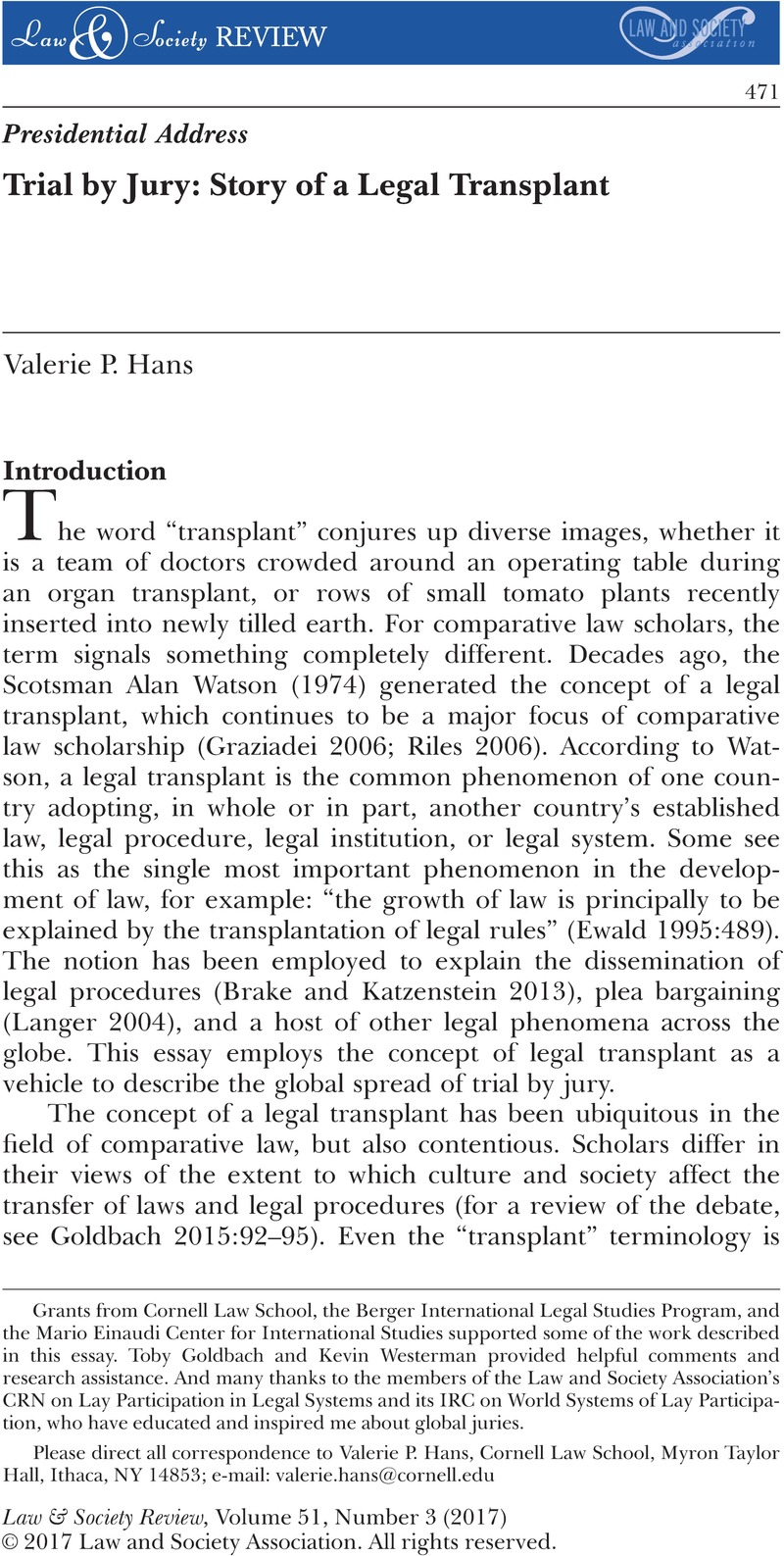Crossref Citations
This article has been cited by the following publications. This list is generated based on data provided by
Crossref.
Walker, Lee Demetrius
2017.
The Jury as a Translation of Democratic Participation and Political Conflict.
Law & Society Review,
Vol. 51,
Issue. 3,
p.
517.
Bergoglio, María Inés
2017.
The Dissemination of Jury Trials: A Reading from Argentina.
Law & Society Review,
Vol. 51,
Issue. 3,
p.
510.
Diamond, Shari Seidman
and
Rose, Mary R.
2018.
The Contemporary American Jury.
Annual Review of Law and Social Science,
Vol. 14,
Issue. 1,
p.
239.
Goldbach, Toby S.
2019.
Why Legal Transplants?.
Annual Review of Law and Social Science,
Vol. 15,
Issue. 1,
p.
583.
CHIN, Mong-Hwa
2019.
Lay Participation in Taiwan: Observations from Mock Trials.
Asian Journal of Law and Society,
Vol. 6,
Issue. 01,
p.
181.
Rubin, Ashley T.
2019.
Punishment's Legal Templates: A Theory of Formal Penal Change.
Law & Society Review,
Vol. 53,
Issue. 2,
p.
518.
Garoupa, Nuno
2020.
Comment on “Accuracy of Verdicts under Different Jury Sizes and Voting Rules”.
Supreme Court Economic Review,
Vol. 28,
Issue. ,
p.
237.
Nelson, Matthew J.
Bâli, Aslı
Mednicoff, David
and
Lerner, Hanna
2020.
From Foreign Text to Local Meaning: The Politics of Religious Exclusion in Transnational Constitutional Borrowing.
Law & Social Inquiry,
Vol. 45,
Issue. 4,
p.
935.
Willmott, Dominic
Boduszek, Daniel
Debowska, Agata
and
Hudspith, Lara
2021.
Forensic Psychology.
p.
94.
Amietta, Santiago Abel
2021.
In Ambiguous Times and Spaces: The Everyday Assemblage of Lay Participation to Argentine Courthouses.
Social & Legal Studies,
Vol. 30,
Issue. 4,
p.
605.
Hill, Michael
2021.
The jury is out: a new approach to awarding science prizes.
F1000Research,
Vol. 10,
Issue. ,
p.
1237.
Levai, Adam
and
Turati, Riccardo
2022.
The Impact of Immigration on Workers’ Protection.
SSRN Electronic Journal ,
Doornbos, Nienke
2023.
Community courts as legal transplants: a socio-legal case study from the Netherlands.
International Journal of Law in Context,
Vol. 19,
Issue. 4,
p.
437.
Hans, Valerie P.
Diamond, Shari Seidman
Kutnjak Ivković, Sanja
and
Marder, Nancy S.
2024.
Judgment by Peers: Lay Participation in Legal Decision Making.
Annual Review of Law and Social Science
,
Vol. 20,
Issue. 1,
p.
141.
Poama, Andrei
and
McGinnis, Briana
2024.
Citizens with Felony Convictions in the Jury Box: A Peer‐Judgment Argument.
American Journal of Political Science,
Vol. 68,
Issue. 4,
p.
1403.



